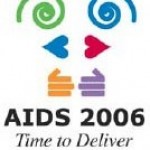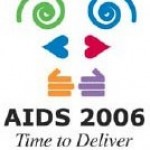August 17, 2006 (AIDSmeds)—Forty-eight week results from a phase II clinical trial of TNX-355, an HIV-entry inhibitor,were reported today at the XVI International AIDS Conference inToronto. While the study found that the two doses of TNX-355 exploredin the study were associated with greater reductions in viral loadcompared to placebo, the U.S. Food and Drug Administration hasrequested additional dosing studies before the drug is moved intolate-stage development.
TNX-355 contains geneticallyengineered antibodies, known as monoclonal antibodies. These antibodiesbind to the CD4 receptor on T-cells(CD4 cells). Once TNX-355 binds to these receptors, HIV cannotsuccessfully connect with the surface of CD4 cells, thus preventing thevirus from infecting healthy cells. The drug is unlike any otherexperimental HIV therapy in phase II or phase III development in thatit is administered intravenously once every two weeks. It also worksdifferently from other entry inhibitors in late-stage development, suchas vicriviroc and maraviroc.
Theclinical trial, conducted by Tanox and reported at IAC by StanleyLewis, MD, Medical Director of the company, involved 82 HIV-positivepatients who had tried and failed drugs in all three major classes(PIs, NNRTIs, and NRTIs) and had viral loads of at least 10,000 uponentering the study.
The study was designed to comparetwo doses of TNX-355 – 10 mg per kilogram of body weight (mg/kg) and 15mg/kg – to that of placebo. Patients were randomized to receive 10mg/kg every week for eight weeks followed by every two weeksthereafter, 15 mg/kg every two weeks, or placebo every two weeks. Allof the patients enrolled in the study received optimized backgroundtherapy (OBT) – a combination of approved HIV drugs that patients’viruses were believed to be at least partially sensitive to based onthe results of drug-resistance testing.
After48 weeks, treatment with the 10 mg/kg dose of TNX-355 resulted in anaverage viral load reduction of 0.96 log, compared with a 0.14 logreduction in the placebo group. Patients who received the 15 mg/kg doseof TNX-355 had an average viral load reduction of 0.71 log, comparedwith a 0.14 log reduction in the placebo group. The differences inviral load reductions between the two TNX-355 groups and the placebogroup were statistically significant, meaning that the results were notdue to chance.
Unfortunately, the percentages ofpatients with undetectable viral loads after 48 weeks of treatment werelow, with no statistically significant differences between the threegroups. In the 15 mg/kg TNX-355 group, 7% had viral loads below 400 and4% had viral loads below 50. In the 10 mg/kg TNX-355 group, 4% hadviral loads below 400 and no patients had viral loads below 50. In theplacebo group, no patients had viral loads below 400 or 50.
Patientsin both TNX-355 groups experienced greater CD4 cell increases comparedto those in the placebo group. There was an average increase of 48cells in the 10 mg/kg group, an average increase of 51 cells in the 15mg/kg group, and an average increase of one cell in the placebo group.The differences between the TNX-355 groups and the placebo group werestatistically significant.
Dr. Lewis reported that bothdoses of TNX-355 were well tolerated, with no severe adverse eventsrelated to the drug. No infusion-site reactions were reported.
Developmentof TNX-355 has been slowed due to U.S. Food and Drug Administrationquestions related to this study. Before the drug can move intolate-stage phase II and phase III clinical trials – which Tanox washoping to move forward with this year – the FDA has requested that thecompany first conduct additional early-stage phase II studies todetermine the correct dose of the drug.
As was reviewed byDr. Lewis, the drop in viral load was actually higher in the 10 mg/kgTNX-355 group than in the 15 mg/kg group. Normally, a higher dose wouldbe expected to reduce viral load even more than a lower dose. It islikely that questions surrounding the more limited viral load responsein the higher dose group, compounded by the fact that only two doseshave been tested in clinical trials, sparked the FDA to requireadditional study data involving different doses.
IAC: Encouraging TNX-355 Data





Comments
Comments